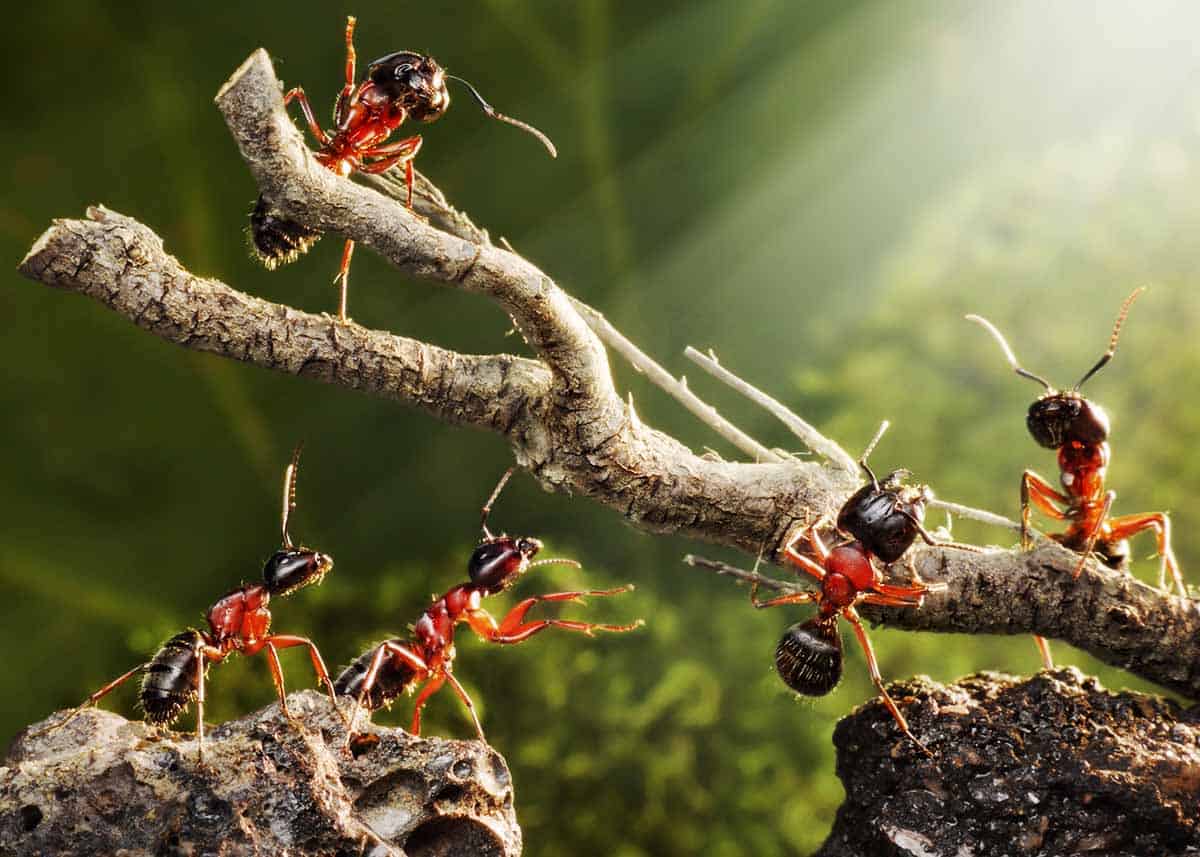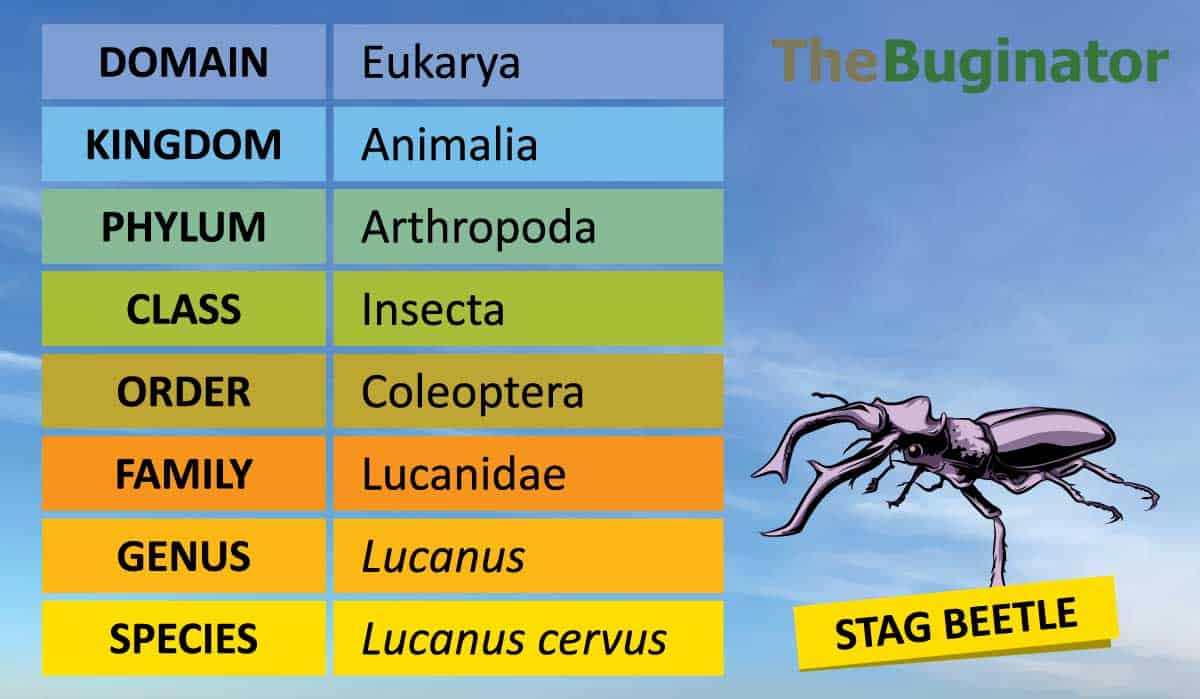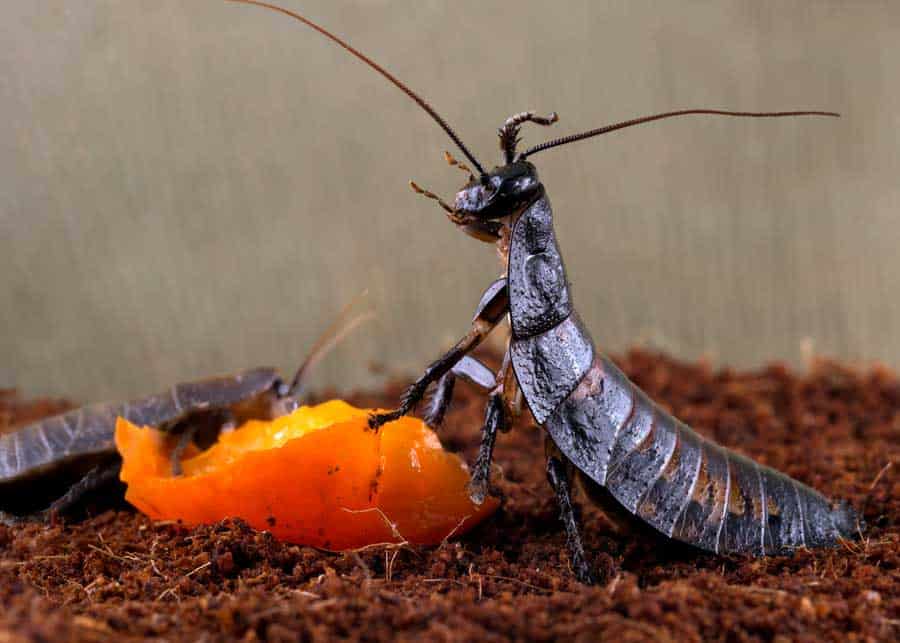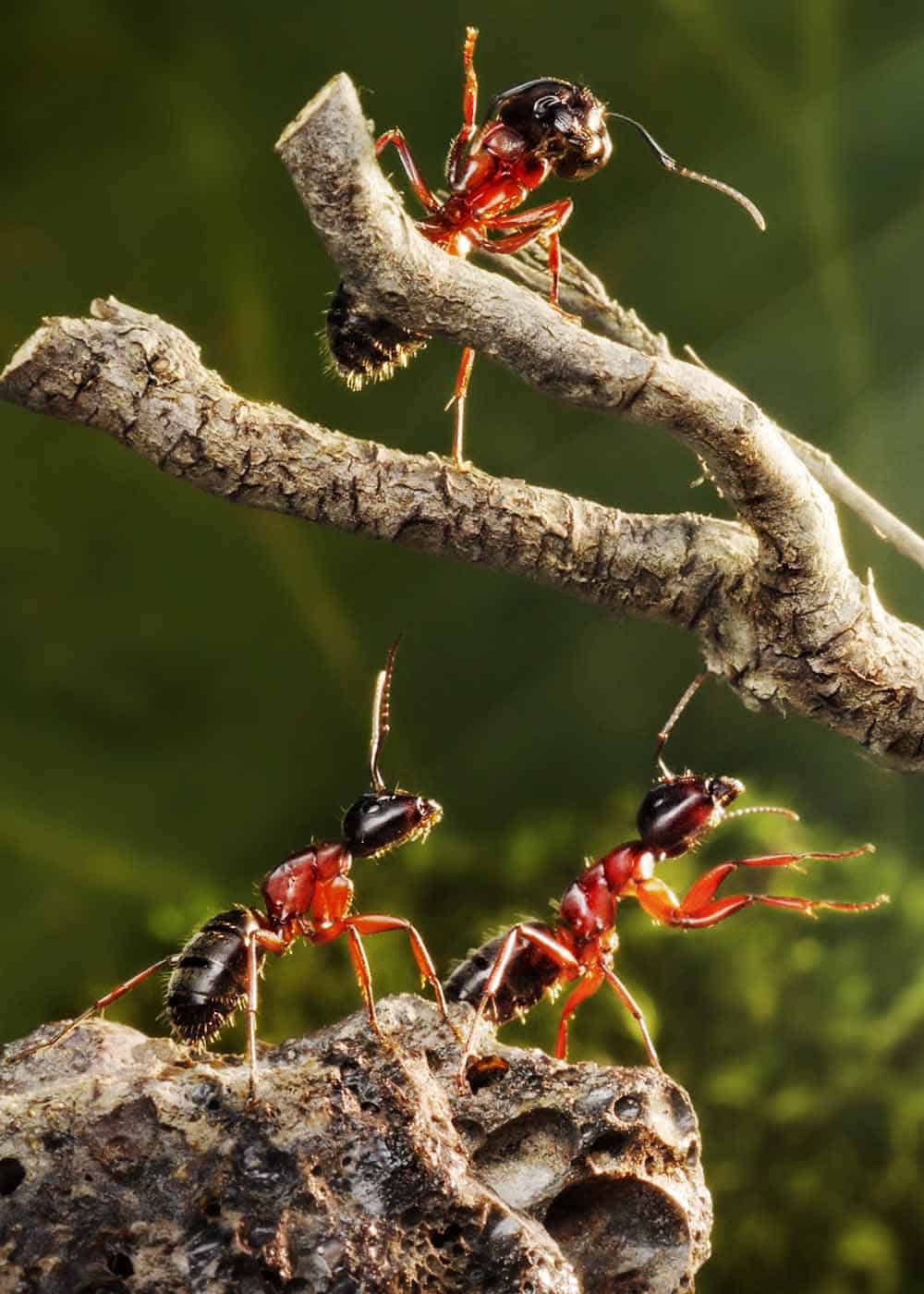Insects are amazing tiny creatures and are often overlooked. Are insects animals or something else entirely?
Insects are animals because they meet the taxonomic classification for the animal kingdom. These characteristics include: respire with oxygen, feed on organic material, motility, sexual reproduction, and are multicellular. There are more insects on Earth than all other animals combined.

Let’s take a closer look at the unique attributes of insects. We’ll start by exploring whether bugs and insects are actually animals and then answer some common questions.
Table of Contents
Are Insects Animals? 5 Characteristics
Yes, insects are classified as animals.
Insects belong to the Kingdom Animalia because they share the following characteristics:
- Ability to move, at least during part of their life cycle.
- Reproduce sexually
- Feed on organic material (heterotrophic)
- Respire using oxygen (aerobically). There are a few exceptions to this.
- Multicellular
Any organism that doesn’t possess these traits (such as plants, fungi, and bacteria) isn’t classified as an animal.
Classifications of Insects
Insects are in the Animal Kingdom and the arthropod Phylum.
Here’s the full breakdown of the insect taxonomy, using the Stag Beetle as an example.
- Kingdom: Animalia
- Phylum: Arthropoda
- Class: Insecta
- Order: Coleoptera
- Family: Lucanidae
- Genus: Lucanus
- Species: Lucanus cervus

5 Basic Characteristics of Insects
All insects share some basic characteristics that differentiate them from other animals.
- Segmented bodies: Insects have three main body segments, the head, thorax, and abdomen. While these regions might be invisible in some insects like termites, they’re still present.
- Six legs: A good indicator that you’re looking at an insect is the three pairs of legs attached to the middle segment of the body (thorax).
- Lack of a backbone: Instead of a spine, insects have an exoskeleton of plates to maintain their shape and protect them from predators.
- Pair of antennae and two compound eyes
- Wings: While not all insects have wings, the ones that do, have two pairs located on the thorax.
Are Bugs and Insects the Same?
While not all insects are bugs, all bugs are insects. Insects represent a larger group into which bugs fall.
Because bugs are insects, all bugs are also animals.
Bugs are a specific order (Hemiptera) within the insect class of animals.
What is an Insect?
Here’s a great video introduction to insects by the Smithsonian National Museum.
Species Commonly Mistaken for Insects
Spiders, ticks, mites, centipedes, millipedes, and woodlice are all arthropods that are often confused with insects.
While these species may have the same characteristics as insects, such as an exoskeleton or multiple legs, a closer inspection reveals significant differences.
What are these animals commonly confused as insects?
- Spiders: Like ticks and mites, spiders belong to the Arachnida class of arthropods with eight legs and two body parts.
- Centipedes: They’re recognized by their long, segmented bodies and multiple legs. Each segment of their body has one pair of legs, and the total number can range between 30 and 382. Belonging to the Chilopoda class, centipedes are predatory and can inject venom inflicting pain.
- Millipedes: Millipedes are in the Diplopoda class, which is distinguishable by having two pairs of legs per segment. Unlike centipedes, they’re non-venomous and feed on decaying vegetation.
- Woodlice: Woodlice belong to the Isopoda class, and you can identify them by their small, flattened oval-shaped body. Unlike the other species, they have seven pairs of jointed legs.
So while each of these aren’t insects, they are animals.
How Is the Global Insect Population Compared to That of Animals?
The global insect population is much larger than animals, with an estimated ten quintillion individual insects alive. That accounts for more than 80% of the total global species population, dwarfing other animals by a wide margin.
Scientists believe this figure could even be higher due to the undiscovered insect species.
The table below compares the number of undescribed insect species to those of animals, showing a large variation.
| Group | World Estimate | World Described Species |
| Reptiles | ~10,000 | 8,734 |
| Fish | ~40,000 | 31,153 |
| Birds | >10,000 | 9,990 |
| Insects | ~5,000,000 | ~1,000,000 |
| Amphibians | ~15,000 | 8,734 |
Beetles lead the insect pack with more than 270,000 species described, representing nearly 40% of all insect species.
Followed at a distance by flies and butterflies, with almost 166,000 and 150,000 species, respectively.
But Why Are There So Many Insects Compared to Animals?
Insects are incredibly resilient creatures, able to adapt and thrive in almost any environment.
Their small size allows them to find food, mates, and shelter more easily than larger animals. And they can reproduce quickly. All these factors make insects incredibly successful species.
Frequently Asked Questions
Let’s consider some FAQs about insects.
Do insects have blood?
Yes, insects have blood called hemolymph, which means “blood without oxygen.”
Unlike mammals, most insects’ oxygen-requiring organs are located on their exterior, allowing them to obtain oxygen directly from the air via diffusion.
The hemolymph contains no red blood cells and primarily transports nutrients throughout the body.
Insects also have hearts, which are unique from the hearts of vertebrates.

Do insects have teeth?
Yes, insects have mouthparts that function similarly to teeth to help suck or pierce their food. And depending on the mode of feeding, the mouthparts may look different.
For example, mosquitoes have needle-like mouthparts to suck blood, whereas bees have long, straw-like proboscis for sucking nectar from flowers.
How do insects smell?
Insects rely on their antennae to smell and detect pheromones from other insects.
The antennae have olfactory sensilla, which sends signals to the insect’s brain whenever it comes into contact with a smell. Insects can pick up odors (like essential oils) even at low concentrations, making them hyper-aware of their surroundings.
Do insects need sleep?
Insects, like other animals, can become fatigued and require sleep to recover and recharge. However, their sleeping patterns depend on their eating habits.
For example, bees spend most of their day foraging for nectar and sleeping at night. Crickets and bed bugs, on the other hand, sleep during the day and remain active at night.
How do insects breathe?
Unlike mammals, insects do not have lungs or other specialized organs for breathing.
Instead, they rely on the diffusion of gasses through the walls of the tracheae to exchange oxygen and carbon dioxide. This breathing method is known as “tracheal respiration” and is unique to insects and other invertebrates.

Your Turn
Insects are incredibly diverse, complex creatures that play an important role in ecosystems. While there is still much to learn about them, one thing is certain: they’re more than pesky nuisances.
Have a question? Or maybe I missed a detail? Please join me in the comments.
- About the Author
- Latest Posts
Bryan Haines is a co-founder and writer at The Buginator. And is working to make it the best resource for taking back the outdoors from biting, stinging pests.
He also blogs about travel at Storyteller.Travel and photography at Storyteller Tech. Bryan is a partner at Storyteller Media, a publishing company he runs with his wife, Dena.
